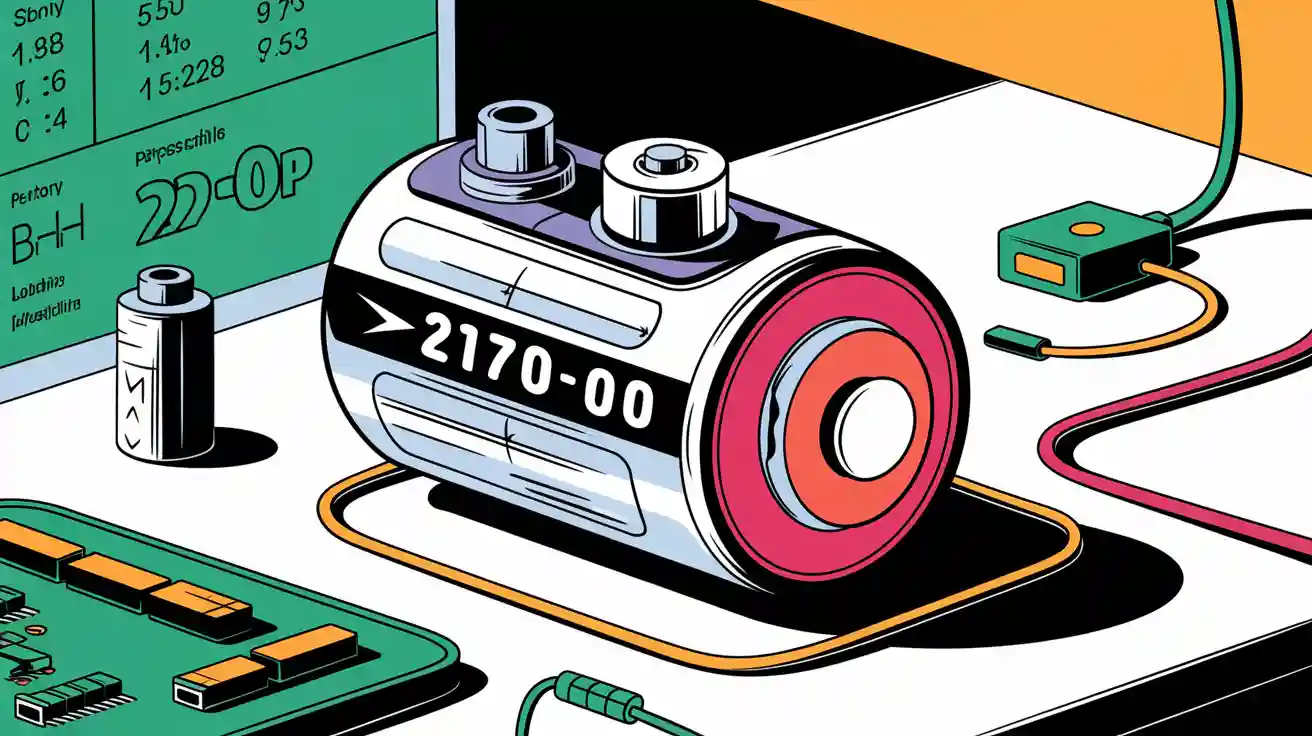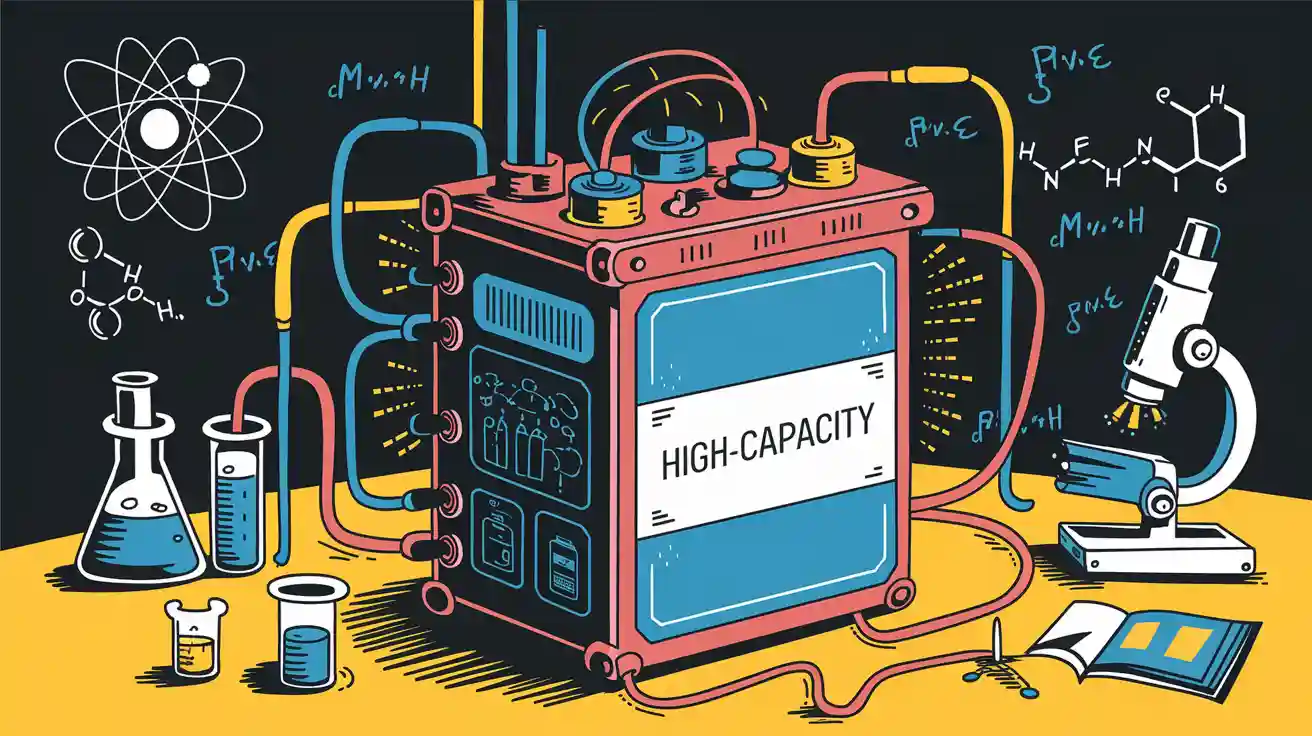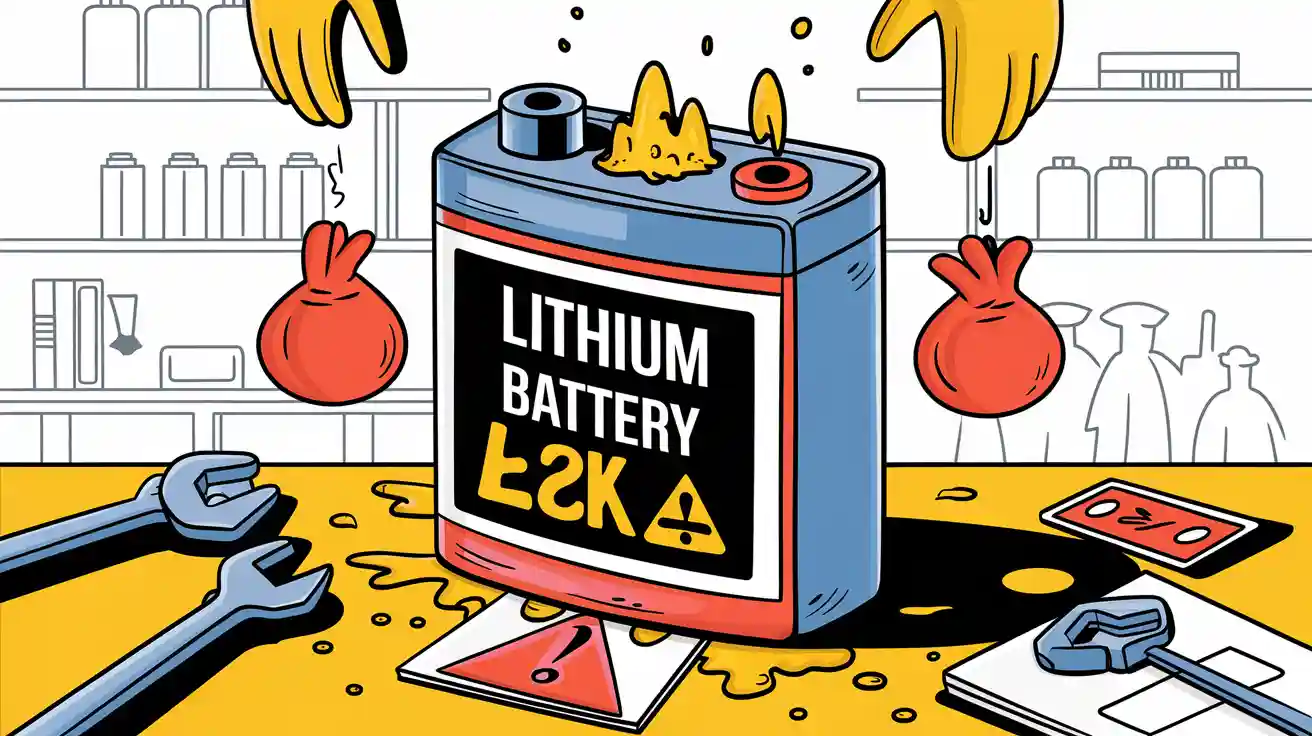Contents

The 21700 battery is a cylindrical lithium-ion battery with a diameter of 21mm and a length of 70mm. It offers a nominal voltage of 3.7V and a capacity of up to 5,000mAh, making it a powerful and efficient energy source. Its energy density ranges between 250 Wh/kg and 300 Wh/kg, depending on the chemistry. These features contribute to its widespread adoption.
In 2023, the 21700 market size reached USD 1.2 billion.
Projections estimate it will grow to USD 7.9 billion by 2032.
A compound annual growth rate of 22.8% highlights its increasing demand.
You’ll find this battery in electric vehicles, power tools, and energy storage systems, where its high capacity and efficiency excel.
Key Takeaways
The 21700 battery can hold up to 5,000mAh of power. This means it lasts longer than the 18650 battery in devices.
It has an energy density up to 270 Wh/kg. This makes it great for small but strong energy needs.
Picking trusted brands like Samsung and LG gives better performance and dependability.
Part 1: Specifications of the 21700 Battery
1.1 Size and Dimensions of the 21700 Cell
The 21700 cell stands out due to its standardized dimensions of 21mm in diameter and 70mm in length. These measurements make it larger than the widely used 18650 cell, which measures 18mm by 65mm. This increase in size allows the 21700 to deliver higher energy storage and improved performance.
Specification | 21700 Cell | 18650 Cell |
|---|---|---|
Diameter | 21 mm | 18 mm |
Length | 70 mm | 65 mm |
Nominal Voltage | 3.6 – 3.7 volts | 3.6 – 3.7 volts |
Capacity | 4,000 – 5,000 mAh | 2,500 – 3,500 mAh |
Energy Density Increase | 2% – 6% | N/A |
Discharge Rate | 3.75c | N/A |
The larger size of the 21700 cell enables it to store more energy, making it ideal for applications requiring high power capacity, such as electric vehicles and industrial battery packs. Its dimensions also contribute to better thermal management, ensuring safer and more efficient operation.
1.2 Voltage and Capacity of the 21700 Battery
The 21700 battery operates at a nominal voltage of 3.7V, with a full charge voltage of 4.2V and a discharge cutoff voltage of 3.0V. This voltage range aligns with industry standards for lithium-ion batteries, ensuring compatibility with various devices and systems.
Specification | Value |
|---|---|
Full Charge Voltage | 4.2V |
Nominal Voltage | 3.7V |
Discharge Cutoff Voltage | 3.0V |
Typical Capacity | 5000mAh or more |
18650 Maximum Capacity | 3500mAh |
The capacity of the 21700 battery, ranging from 4,000mAh to 5,000mAh, significantly surpasses that of the 18650 cell. This higher capacity allows the 21700 to power devices for longer durations, reducing the need for frequent recharging. Whether you’re designing a medical device, a robotics system, or a security system, the 21700 battery offers the reliability and endurance you need.
1.3 Chemistry and Energy Density of the 21700 Battery
The 21700 battery utilizes advanced lithium-ion chemistry, which provides a balance between energy density, safety, and longevity. Depending on the specific chemistry, such as NMC or LCO, the energy density of the 21700 ranges from 250 Wh/kg to 300 Wh/kg. This makes it a preferred choice for applications requiring compact yet powerful energy storage solutions.
For example:
NMC Lithium battery: Energy density of 160–270 Wh/kg, cycle life of 1,000–2,000 cycles.
LCO Lithium battery: Energy density of 180–230 Wh/kg, cycle life of 500–1,000 cycles.
The high energy density of the 21700 battery ensures that it can store more energy in a smaller footprint. This feature is particularly beneficial for consumer electronics and infrastructure projects, where space and weight are critical considerations.
Tip: When selecting a 21700 battery, consider the specific chemistry to match your application’s energy and cycle life requirements.
1.4 Weight and Durability of the 21700 Cell
The 21700 cell weighs approximately 60–70 grams, depending on the manufacturer and specific chemistry. While slightly heavier than the 18650 cell, this weight increase is justified by its higher capacity and energy density. The robust construction of the 21700 ensures durability, making it suitable for demanding environments such as industrial applications and transportation systems.
Its durability also extends to its cycle life, with some chemistries like LiFePO4 offering up to 5,000 cycles. This longevity reduces the total cost of ownership, as you won’t need to replace the battery as frequently. For businesses relying on battery packs for critical operations, the 21700 provides a reliable and cost-effective solution.
Part 2: Comparison with Other Battery Types

2.1 21700 vs. 18650: Key Differences in Size and Capacity
When comparing the 21700 battery to the 18650, the most noticeable difference lies in their size. The 21700 measures 21mm in diameter and 70mm in length, while the 18650 is smaller at 18mm by 65mm. This increase in size allows the 21700 to store more energy, making it a superior choice for applications requiring higher capacity and longer runtimes.
Battery Type | Diameter (mm) | Length (mm) | Capacity (mAh) |
|---|---|---|---|
18650 | 18 | 65 | 2000 – 3500 |
21700 | 21 | 70 | 4000 – 5000 |
The 21700 battery offers a capacity range of 3000 mAh to 5100 mAh, significantly higher than the 18650’s 2000 mAh to 3500 mAh. This increased capacity translates to longer runtimes, reducing the frequency of recharging. For example, in medical devices like portable ventilators, the 21700 ensures extended operation, which is critical in emergency scenarios. Similarly, robotics systems benefit from the higher capacity, enabling longer autonomous operation without interruptions.
Tip: If you’re designing a battery pack for industrial or infrastructure applications, the 21700’s higher capacity and energy density make it a more efficient choice than the 18650. Explore custom battery solutions here.
2.2 Applications in 21700 Packs vs. Other Battery Packs
The 21700 battery has revolutionized battery pack design across various industries. Its higher capacity and energy density make it a preferred choice for applications requiring compact yet powerful energy solutions. In electric vehicles, for example, 21700 packs offer greater range and efficiency compared to those using 18650 cells. Tesla’s adoption of the 21700 in its Model 3 highlights its potential to enhance performance in transportation systems. Explore infrastructure battery solutions here.
In consumer electronics, the 21700 battery enables slimmer designs without compromising performance. Devices like high-performance laptops and gaming consoles benefit from its compact size and extended runtime.
Industrial applications also leverage the 21700’s durability and efficiency. Power tools, for instance, require batteries that can withstand high discharge rates and frequent use. The 21700 excels in these demanding environments, offering reliability and cost-effectiveness.
Note: If you’re wondering how long does a 21700 battery last, its lifespan depends on the specific chemistry and usage conditions. However, with proper maintenance, it can last for several years, making it a worthwhile investment for businesses.
Part 3: Recommended Brands and Models
3.1 Samsung and LG 21700 Batteries
Samsung and LG are two of the most trusted names in the lithium-ion battery market. Their 21700 cells are known for their high capacity and consistent performance. Samsung’s 21700 batteries, such as the Samsung 50E, offer a capacity of up to 5,000mAh, making them ideal for applications requiring extended runtimes. These batteries are widely used in consumer electronics, robotics, and medical devices due to their reliability and energy efficiency.
LG’s 21700 batteries, like the LG M50, also deliver exceptional performance. With a similar capacity range, they are designed for high-drain devices and industrial applications. Their robust construction ensures durability, even in demanding environments. Both brands adhere to strict quality standards, making them a safe and efficient choice for your battery packs.
Tip: When selecting a 21700 cell from Samsung or LG, consider the specific requirements of your application, such as capacity, discharge rate, and cycle life.
3.2 Panasonic and Tesla 21700 Cells
Panasonic and Tesla have set benchmarks in the 21700 battery market. Panasonic’s 21700 cells are renowned for their safety and longevity. These batteries are commonly used in infrastructure projects and electric vehicles, where reliability is critical. Tesla, on the other hand, has revolutionized the industry with its 21700 and 4680 cells. Tesla’s 21700 batteries, used in the Model 3, offer a 16% increase in driving range compared to older models. Their advanced design also ensures faster charging and enhanced safety.
Aspect | Panasonic 21700 Battery | Tesla 4680 Battery |
|---|---|---|
Single-cell Energy | Standard | 5x higher |
Driving Range | Baseline | 16% increase |
Cost Reduction | N/A | 54% decrease |
Safety | High | Highest among types |
Fast Charging | Standard | Improved due to tab-less design |
These features make Panasonic and Tesla batteries a top choice for transportation and industrial applications. Their focus on innovation and sustainability aligns with global energy goals. Explore sustainability initiatives here.
3.3 Other Reliable Manufacturers of 21700 Packs
Several other manufacturers also produce high-quality 21700 battery packs. Companies like Sony, Sanyo, and EVE Energy have established themselves as reliable players in the market. These brands offer a range of options tailored to specific industries, including security systems and consumer electronics. Their batteries are designed to meet the highest standards of safety and performance.
Key Insights | Description |
|---|---|
Research Methodology | Comprehensive research ensures reliable findings. |
Key Players | Panasonic, Samsung, and others are identified as leaders. |
Market Trends | Growth in Lithium Cobalt Oxide batteries highlights brand selection. |
When choosing a manufacturer, prioritize those with a proven track record in producing high-capacity lithium-ion rechargeable batteries. This ensures that your battery packs deliver optimal performance and longevity. For custom battery solutions, consult experts like Large Power to design packs tailored to your needs.
The 21700 battery offers unmatched advantages in capacity, energy density, and industrial versatility. Its higher energy density ensures longer device runtimes and reduced charging frequency. Quick charging capabilities make it ideal for high-capacity battery packs. Choose reputable brands and maintain proper usage practices to maximize the performance of this lithium ion battery in your applications.
FAQ
1. What makes the 21700 battery better than the 18650?
The 21700 battery offers higher capacity (up to 5,000mAh), improved energy density, and longer runtimes. Its larger size also supports better thermal management, enhancing safety and performance.
Tip: Choose the 21700 for applications requiring extended operation and higher power output.
2. Can you use 21700 batteries in devices designed for 18650 cells?
No, the 21700 battery is larger and won’t fit in devices designed for 18650 cells. Always check your device’s specifications before selecting a battery.
3. How do you maintain a 21700 battery for longer life?
Store it in a cool, dry place. Avoid overcharging or deep discharging. Use a compatible charger to ensure safe and efficient charging cycles.
Note: Proper maintenance can extend the battery’s lifespan significantly.





